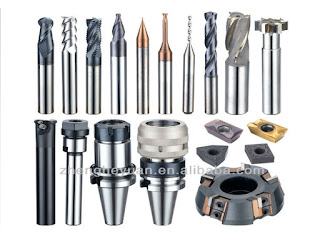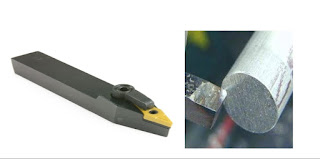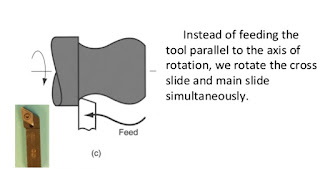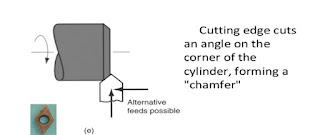Two basic type (excluding abrasives)
- Single point and multi point
- Tool must have rake and clearance angles ground or formed on them
Lathe Tool Bits Generally Made Of Five Materials
- High-speed steel
- Cast alloys (such as stellite)
- Cemented carbides
- Ceramics
- Cermets
Properties Of A Cutting Tool
- Tool should be tough well.
- Cutting tool should be able to withstand the heat generated in the metal cutting process.
- The cutting tool must have a specific geometry, designed so that only the cutting edge touches the work piece
Single Point Tool And Multi-point Tool
Single point
Cutting Tool
Multi-point Cutting Tool
Turning Tool Nomenclature
Cutting edge: Edge of that does cutting
Face: Which chip bears as it is separated from work
Nose: Tip of cutting tool formed by junction of cutting edge and front face
Nose radius: Radius to which nose is ground
Size of radius will affect finish
Rough turning: Small nose radius (.015in)
Finish cuts: Larger radius (.060 to .125 in.)
Shank: Main body of tool-bit or part held in tool-holder
Base: Bottom surface of tool shank
Flank: surface of tool adjacent to and below cutting edge
Tool Bit Geometry
Tool life
The tool life is the period of cutting after which the tool is no longer usable.
- Crater wear in which contact with chips gradually wear away the rake face.
- Nose wear occurs as result of friction between nose metal being machined.
- When flank wear is .015 to .0300 in. Need to reground.
Facing
Turning Tool
Taper Turning Top
Form Turning
Counter Turning
Chamfering
Threading
Form Turning
Counter Turning
Chamfering
Threading
Simple Machine:Tool,Properties,Geometry
 Reviewed by Anjum Rana
on
March 04, 2019
Rating:
Reviewed by Anjum Rana
on
March 04, 2019
Rating:
 Reviewed by Anjum Rana
on
March 04, 2019
Rating:
Reviewed by Anjum Rana
on
March 04, 2019
Rating:






















No comments: